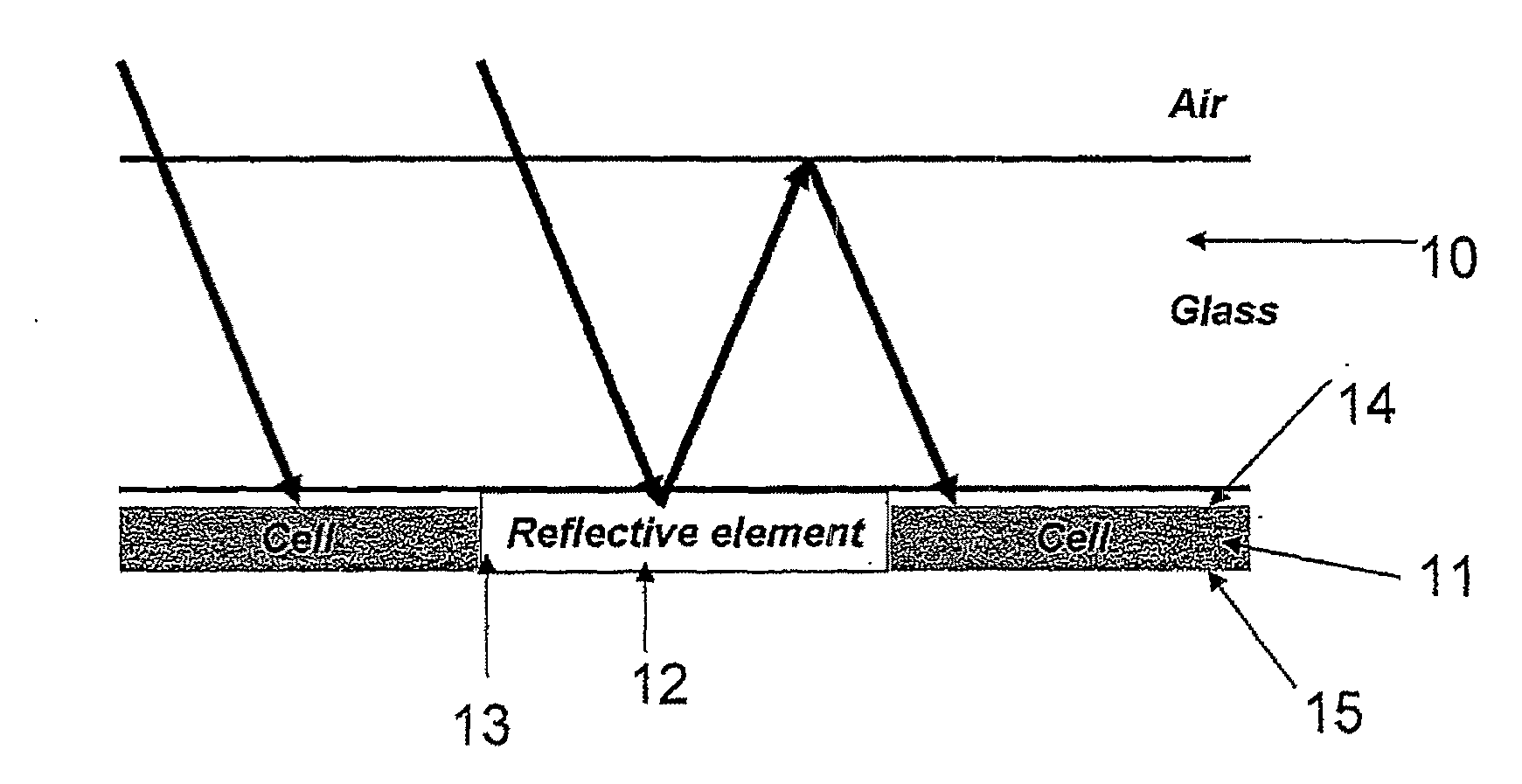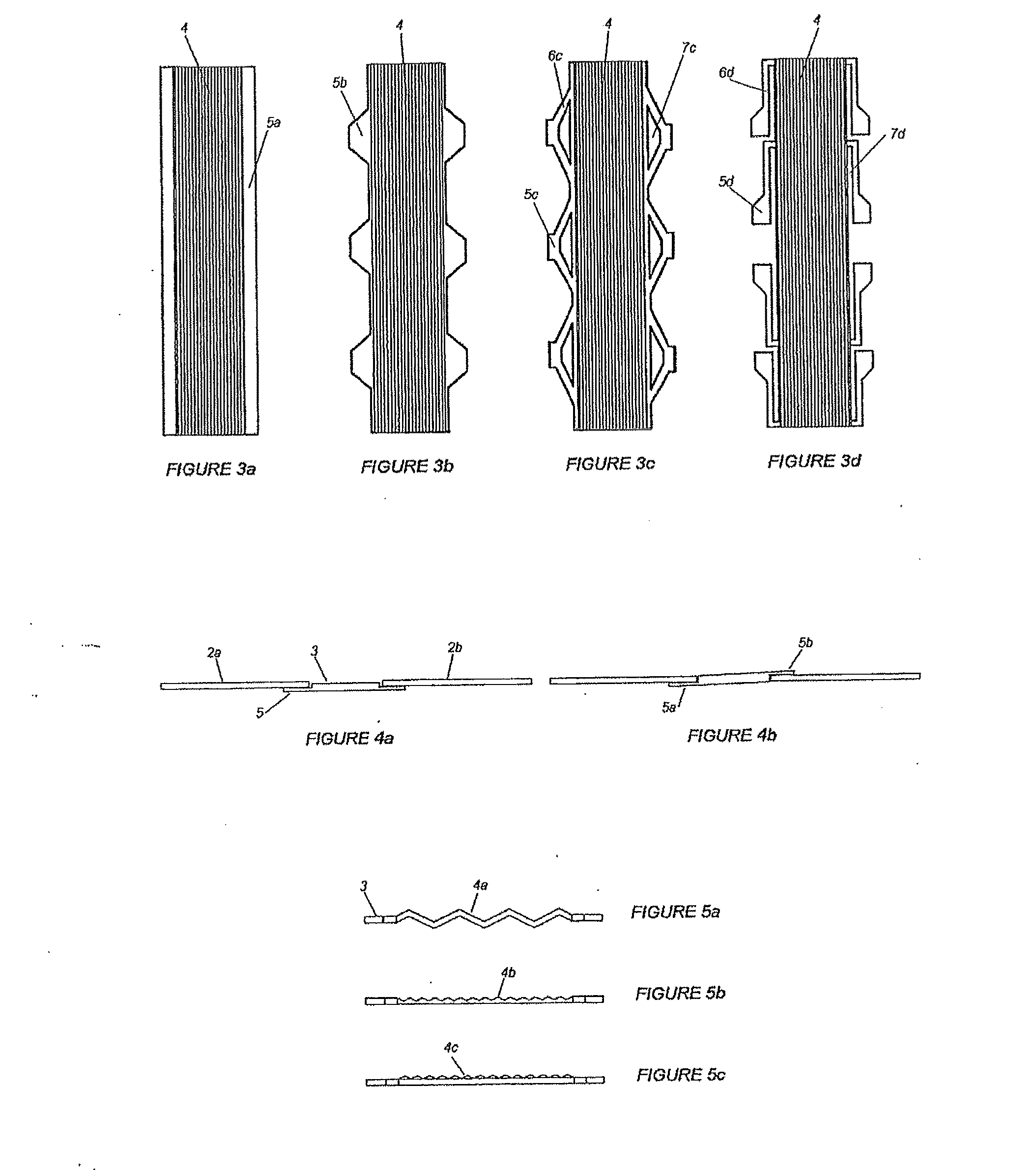Interconnecting reflector ribbon for solar cell modules
a solar cell module and reflector technology, applied in the field of solar cell modules, can solve the problems of metal coating of reflective film affecting the insulation, and achieve the effect of facilitating contact and improving solderability
- Summary
- Abstract
- Description
- Claims
- Application Information
AI Technical Summary
Benefits of technology
Problems solved by technology
Method used
Image
Examples
Embodiment Construction
[0031]The FIG. 1 shows a complete solar cell module 1 with a number of in series interconnected solar cells 2 whereas the solar cells 2 are interconnected by interconnectors 3. One or more strings of alternating solar cells 2 and interconnectors 3 are interconnected and transparently encapsulated behind a transparent front cover. This front cover may be a sheet of glass whereas EVA may be used as the transparent encapsulation material.
[0032]With reference to FIG. 2 which shows a detail of a interconnection as shown in FIG. 1, two adjacent solar cells 2a and 2b are interconnected by an interconnector 3. The front surface, i.e. light receiving surface of the interconnector 3 is substantially completely covered by a reflective structure 4. The interconnector 3 comprises on its longitudinal edges connection elements 5 connected to an elongated bar 6. These are to be connected to corresponding connection islands on the solar cells by means of soldering or any other suitable connection me...
PUM
 Login to View More
Login to View More Abstract
Description
Claims
Application Information
 Login to View More
Login to View More - R&D
- Intellectual Property
- Life Sciences
- Materials
- Tech Scout
- Unparalleled Data Quality
- Higher Quality Content
- 60% Fewer Hallucinations
Browse by: Latest US Patents, China's latest patents, Technical Efficacy Thesaurus, Application Domain, Technology Topic, Popular Technical Reports.
© 2025 PatSnap. All rights reserved.Legal|Privacy policy|Modern Slavery Act Transparency Statement|Sitemap|About US| Contact US: help@patsnap.com



